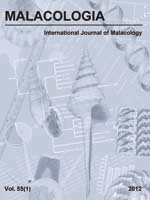The New Zealand mud snail, Potemopyrgus entipoderum (Gray, 1843), is recognized as a successful invader of aquatic environments in Australia, Europe, Japan, North America and western Asia. To date, a long-term survey on the occurrence of P. entipoderum (including its initial dispersal, establishment and integration) both in mining subsidence reservoirs and an adjacent river in Poland has not been carried out. The objectives of this survey were to analyze the environmental factors that influence the occurrence of P. entipoderum in relation to mollusc communities in mining subsidence reservoirs affected by coal mine output in terms of initial dispersal and the establishment of self-sustaining populations in the new habitat, to analyze annual variations in the densities and shell height of P. entipoderum in relation to the different types of substratum, and to determine the number of embryos in the brood pouch per female at the integration stage (phase). During the years 1993–2008, seven mining subsidence reservoirs that have different water sources and a part of the Mleczna River were investigated.
From 1997 to the present, P. entipoderum has been eudominant in mollusc communities both in coal mining subsidence reservoirs, which receive water from the mine dewatering system and in the river. Based on a redundancy analysis (RDA), the conductivity of water and the concentration of nitrates were the parameters most associated with the distribution of mollusc species, including P. entipoderum. The relation between the species and these environmental variables was statistically significant.
These results do not suggest that the integration of P. entipoderum has negatively influenced the occurrence of other mollusc species either in the mining subsidence reservoirs or in the Mleczna River, probably due to smaller densities compared with a survey of the western United States, where P. entipoderum has a strong influence on aquatic ecosystems and restricts the occurrence of native macroinvertebrates. Potemopyrgus entipoderum has established itself in these mining subsidence reservoirs and is integrated into the local biota without any major negative effects (e.g., extirpations) on the communities being invaded.





